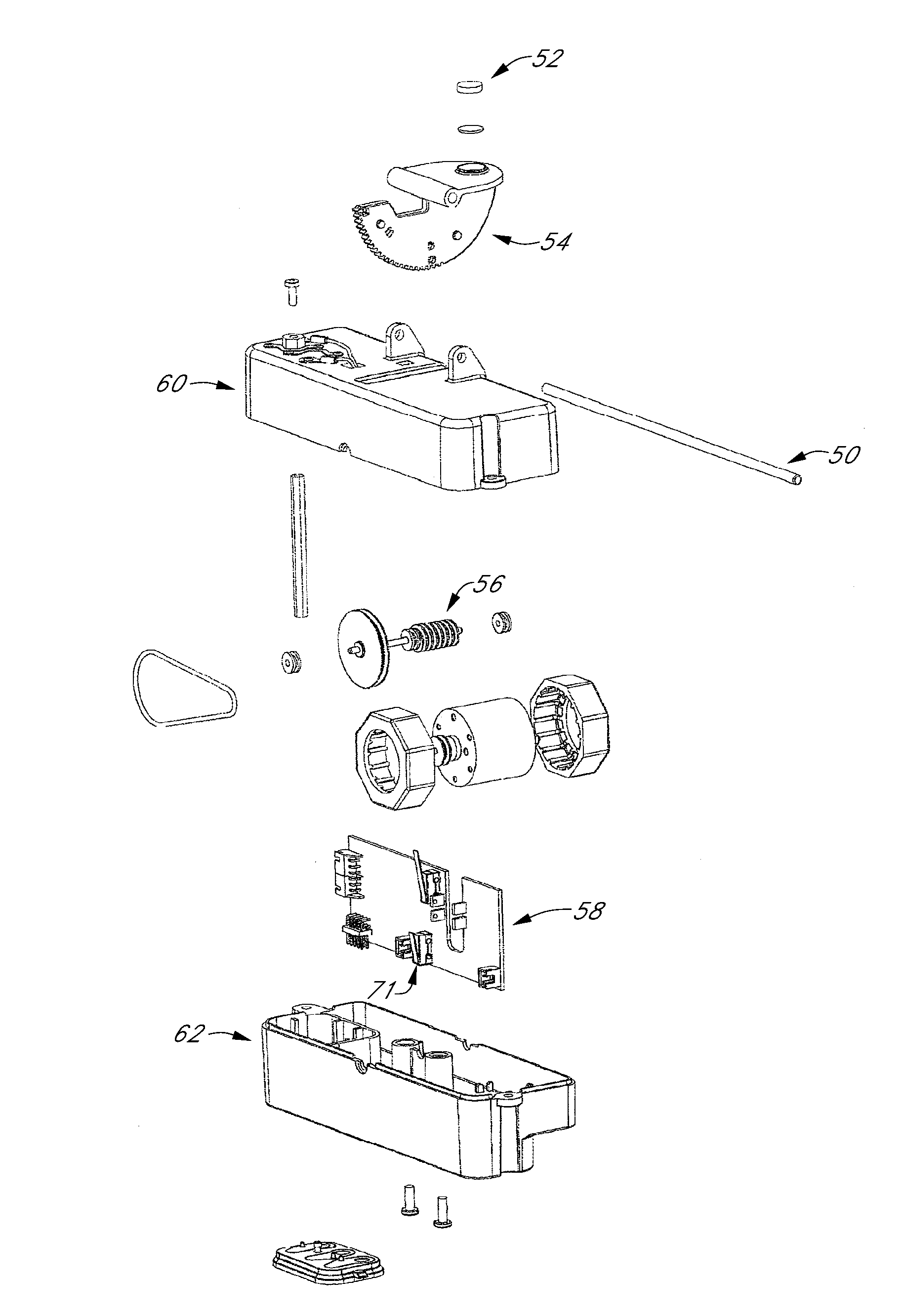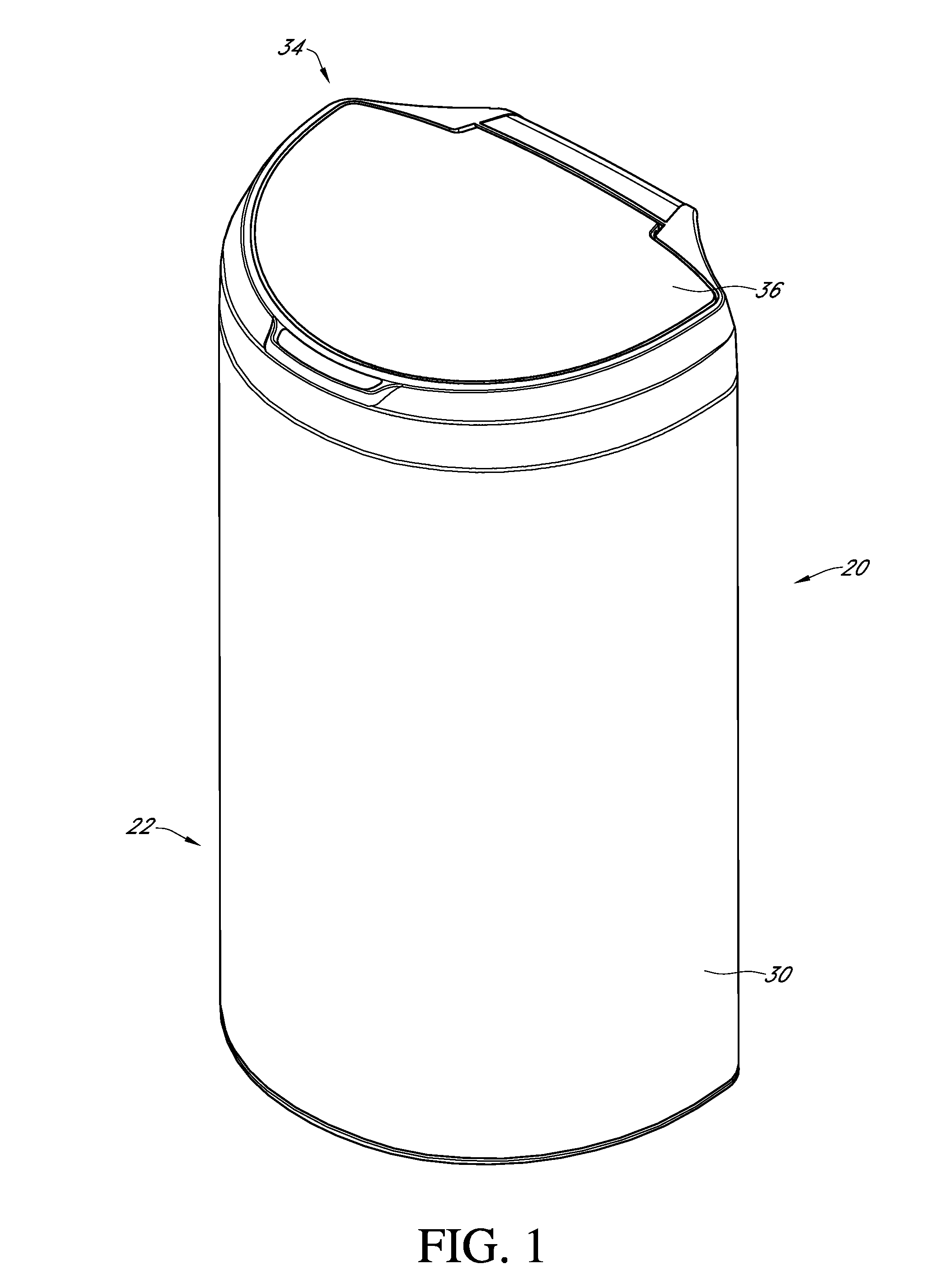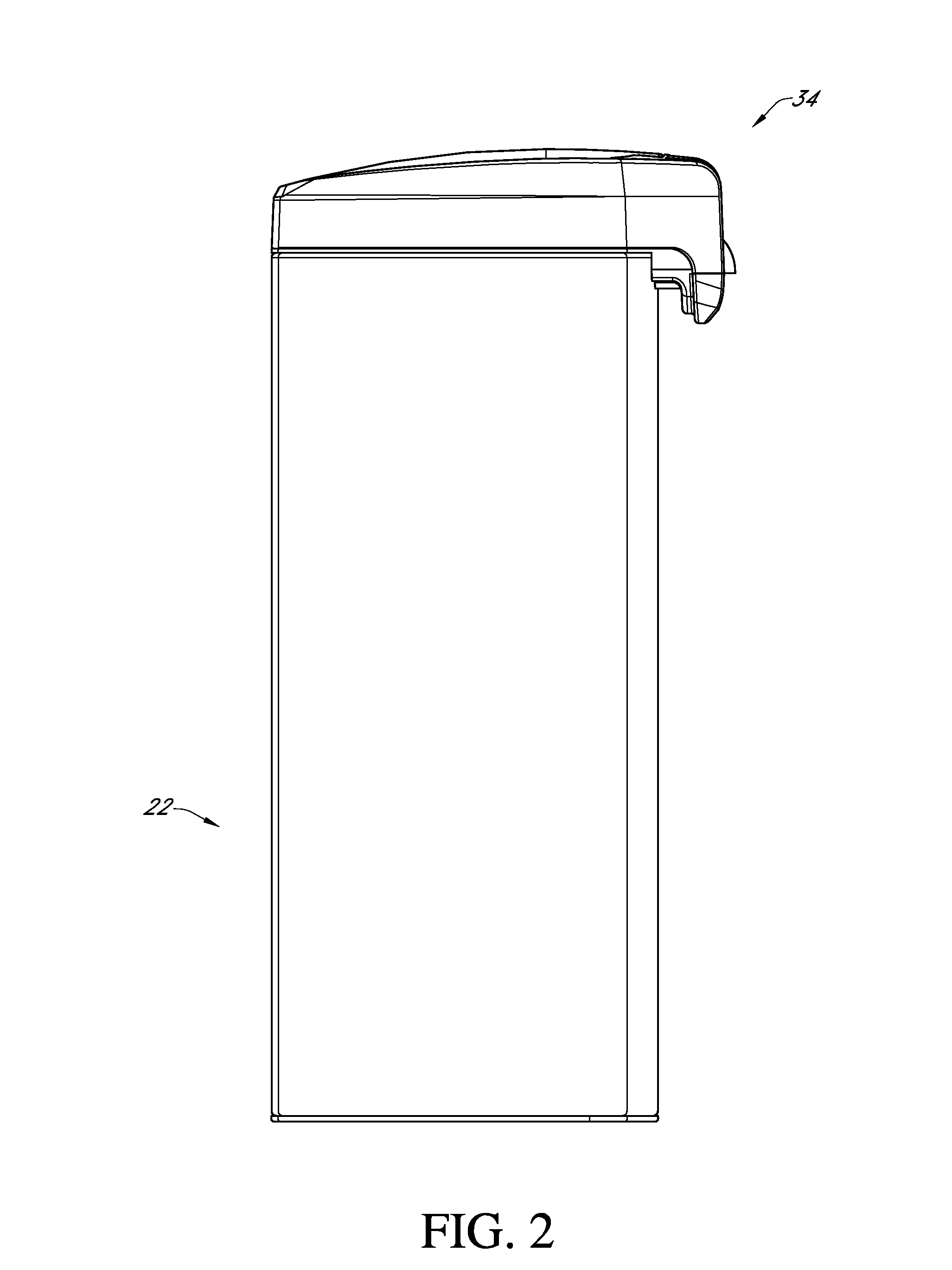Trash can with power operated lid
a technology of power operated lids and trash cans, which is applied in the direction of sealing, starter details, anti-hunting elements, etc., can solve the problems of motor or battery wear, and/or failure of current trash cans with power operated lids
- Summary
- Abstract
- Description
- Claims
- Application Information
AI Technical Summary
Benefits of technology
Problems solved by technology
Method used
Image
Examples
Embodiment Construction
[0036]The embodiments of a powered system for opening and closing a lid or door of a receptacle or other device is disclosed in the context of a trash can. The inventions disclosed herein are described in the context of a trash can because they have particular utility in this context. However, the inventions disclosed herein can be used in other contexts as well, including, for example, but without limitation, large commercial trash cans, doors, windows, security gates, and other larger doors or lids, as well as doors or lids for smaller devices such as high precision scales, computer drives, etc.
[0037]With reference to FIGS. 1 and 2, a trash can assembly 20 can include an outer shell component 22 and door 34. Door 34 can include door components, including but not limited to door component 36. The trash can assembly 20 can sit substantially flush with a floor, and can be of varying heights and widths depending on, among other things, consumer need, cost, and ease of manufacture.
[003...
PUM
 Login to View More
Login to View More Abstract
Description
Claims
Application Information
 Login to View More
Login to View More - R&D
- Intellectual Property
- Life Sciences
- Materials
- Tech Scout
- Unparalleled Data Quality
- Higher Quality Content
- 60% Fewer Hallucinations
Browse by: Latest US Patents, China's latest patents, Technical Efficacy Thesaurus, Application Domain, Technology Topic, Popular Technical Reports.
© 2025 PatSnap. All rights reserved.Legal|Privacy policy|Modern Slavery Act Transparency Statement|Sitemap|About US| Contact US: help@patsnap.com



